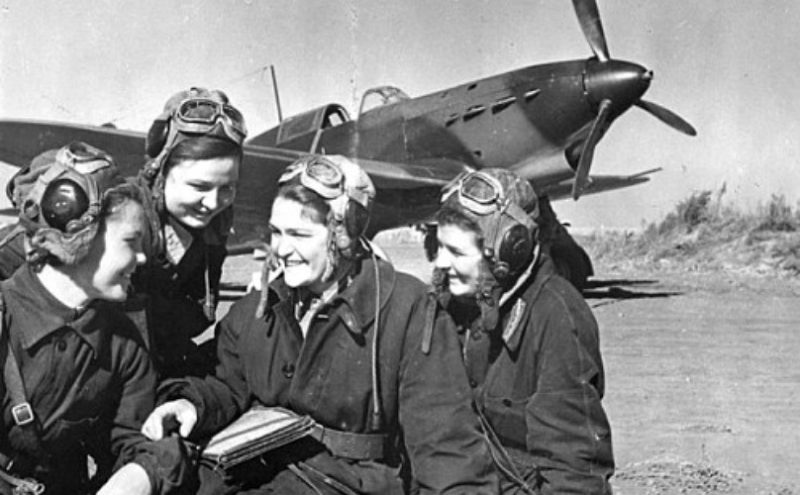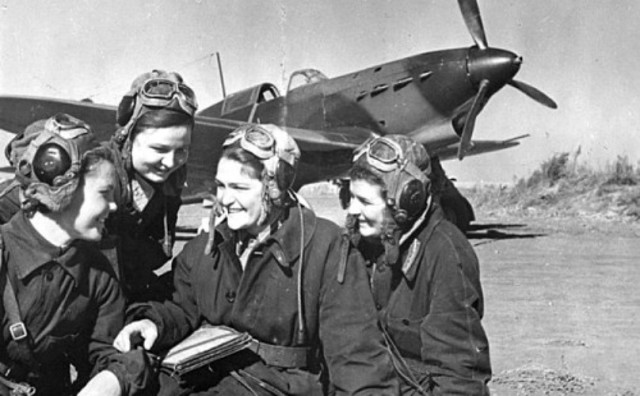Lyuba Vinogradova brings to light the amazing story behind Russia’s Night Witches — the first and only all-women aviation corps in the world which came to being during World War Two.
The Birth of the Night Witches
The Night Witches was the brainchild of the well-known Soviet navigator Marina Raskova. She became driven to assemble three regiments made entirely of women in 1941 as the German troops were advancing towards Moscow. These three regiments were long-distance bombers, night bombers and fighters.
Raskova was a USSR heroine, a celebrated aviatrix after her record-breaking flight which ended up in her crashing into the Siberian taiga resulting to her surviving on a bar of chocolate for ten days. However, in a harsh Soviet twist, Raskova turned out to be a member of the Secret Police and she sent many to their deaths just months before the outbreak of the Second World War. Countless members of the Soviet Air Force as well as the other armed units were quashed in 1940. This was one of the reasons why the German Wehrmacht made fast progress in their advancement.
When Raskova made her plea for volunteers, many young women all over USSR immediately responded. After all, she was a female idol in the said country. many of these women already underwent training as dozens of factories had flying clubs attached to them giving even the poorest the chance to learn how to fly.
One such example was one of the best known pilots of the Second World War, Katya Budanova. She was just a mere village girl who had to work at the very young age of nine.
Aside from being pilots, the women who signed up were also assigned to be navigators, armorers and even mechanics.
Fighting to be Equal
Vinogradova, in her book Defending the Motherland: The Soviet Women who Fought Hitler’s Aces, wrote how during those times, all occupations were opened to women and how Soviet ladies welcomed it with pride by proving they could do as well as their male counterparts when it came to working in various construction sites, in the tunnels of the new metro in Moscow and even when it came to conquering the skies.
Nevertheless, how these women were treated did not keep in line with the state’s ideology. The Night Witches as well as the other regiments established by famous Soviet aviatrix were given the moniker “Raskova’s dollies” were mocked and teased especially the first time they were fitted in ill-fitting uniforms that belonged to the USSR’s male soldiers. Example, in one comic picture, it was cited how a political officer – which, by the way, was a much hated snoop at that time who was attached to a certain regiment – complained about how difficult it was to indoctrinate women after a girl, exhausted and sick of his propaganda talk, invited him instead to just have “a nip under her blanket”.
Even female pilots, who were already hardened by the war’s battles, found themselves grounded just because their commanding officers deemed the situation too risky for women. Katya Budanova and her friend, Lilya Litvyak, had to fight off this shared notion of feminine weakness prevalent among their male counterparts by refusing to be fussed over as well as declining every act of consideration extended their way.
These new female recruits, a number of them being flying instructors before the outbreak of WWII, had little difficulty piloting the mercurial Pe-2 dive bombers or even the Yak-2 fighters. As a matter of fact, many female pilots of the USSR downed dozens of the German’s Messerschmitts using the latter.
Extraordinary Night Witches
But possibly, the most extraordinary war feats of female pilots during the Second World War were those executed by the Russian female night bombers whom the Germans called Night Witches.
The night witches used the frail and little U-2 planes built using plywood and percale linen and ran by 100-horsepower engines. These female night bombers would go across the front line with their planes’ engines off then glide silently while their enemies sleep. The navigator, who had a flare bomb on her lap all along, would toss that overboard serving as the light to illuminate their target. Seeing their intended destinations through that flare bomb, the Night Witches would then drop off their payload.
The planes of the Night Witches only carried enough fuel for an hour’s flight. Doing four sorties a night, these female night bombers would repeatedly land to refuel before taking off again. What was more, they used rudimentary night-flight equipment. Through these all, the damage caused by the Night Witches against the Nazis in terms of the their positions and their soldiers’ morale was considerably great.
The Night Witches and the other female regiments Raskova formed, of course, brought propaganda advantage to USSR. After all, femme fatales were rare in a mainly male-fought conflict. For one, Lilya Litvyak, who became known as the White Rose of Stalingrad, became a celebrity in 1943.
The Downfall
However, with 1943 came change in the Soviet air force. It achieved a measure superiority in the air against the Germans though it was not without great losses. Eventually, the female regiments, including the Night Witches, that Raskova brought to life went down.
And perhaps, the most cruel fate happened to the White Rose, Lilya Litvyak. Not only was her body never been found, her family also suffered for decades to come over the ludicrous rumor of her defection.

